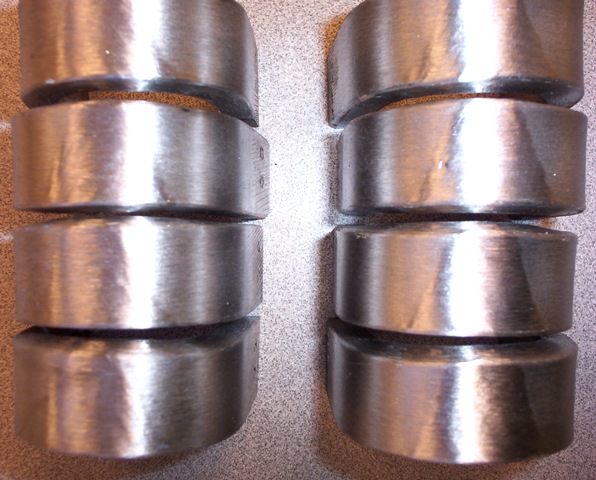Lawrence, you sir are no fun at all sometimes


So, no, we won't go to the corner cracks. But notice please I was fueling fire and playing devil's advocate.
Now, since one of the wrong guys jumped in way too soon...
This is an opinion I have heard many times. But it has several flaws: 1) if doing face and root bends you aren't going to have enough material, 2) the test plate was rejected because it failed, 3) D1.1 clearly states that two welds of each type and position that failed may be done. That makes it clear that the failed welder now welds two new plates for each failing plate, and 4) as Lawrence states we are shown/told exactly where the sample coupon is to come from and once ONE has been removed it is totally impossible to remove another from the correct location.
I had an inspections company owner tell me to just cut more coupons out of the specimen. Now, we had done side bends so only removed 3/8" splices and had enough material to do so. BUT, that is not what the code says. You fail your 3G, you weld 2 more to take it's place and now I bend 2 face and 2 roots to see if you can pass the 3G test. You want to only do one? Wait and prove additional training and/or practice (code says 'or' but and/or is proper as well). If you want it immediately it is 2 for 1.
Personally I use 8" plates with 10" backing bars. That gives me plenty of clamping area in the saw and the code does say 7" minimum for the plates. I can do more if I want. Just not less. 8" has always worked well for me. Doesn't make the welder do a lot of non-required welding but gives more space to get the coupons from. Yes, Lawrence, you go to center then come out 1" then take your sample of what ever dimension for side or face and root bends. (yep, no fun at all)
In addition to already made comments about RT vs bends, notice in Clause 4.20.1.1 and 4.31.3 the phrase "in lieu of" is used. It means, to take the place of, replace, or be in place of. HHMM. That kind of rules out doing both tests. Especially after one has failed. When RT is used in lieu of then it is the final authority. If the film shows rejectable discontinuities then the specimen has failed and is rejected in total. And no, you can't do a second test on the same plates and you certainly can't cut a second set of samples/coupons out of the same plates. (Satisfied Lawrence?

)
I tried but Lawrence just wouldn't let me get away with it.
He Is In Control, Have a Great Day, Brent




 ; SO, the code allows for a retest. If a welder fails and the sample is long enough another set may be cut from the same test plate. Or, another test plate can be welded and used. So, since the RT did not destroy the first test plate...is it really a reach to say that the retest coupons may be cut from the same original test plate and retested but using a different test?
; SO, the code allows for a retest. If a welder fails and the sample is long enough another set may be cut from the same test plate. Or, another test plate can be welded and used. So, since the RT did not destroy the first test plate...is it really a reach to say that the retest coupons may be cut from the same original test plate and retested but using a different test? 

 )
) 






 I don't believe that this is a normal practice.
I don't believe that this is a normal practice.  )
) .
.

 Reads like a fun job Al...
Reads like a fun job Al...







 Once again, it's really good to see you posting again Mike!
Once again, it's really good to see you posting again Mike!





 What a waste of metal!
What a waste of metal!











 Once one got used to it, the test wasn't that difficult.
Once one got used to it, the test wasn't that difficult.




